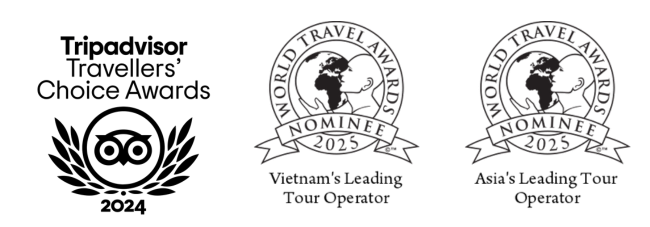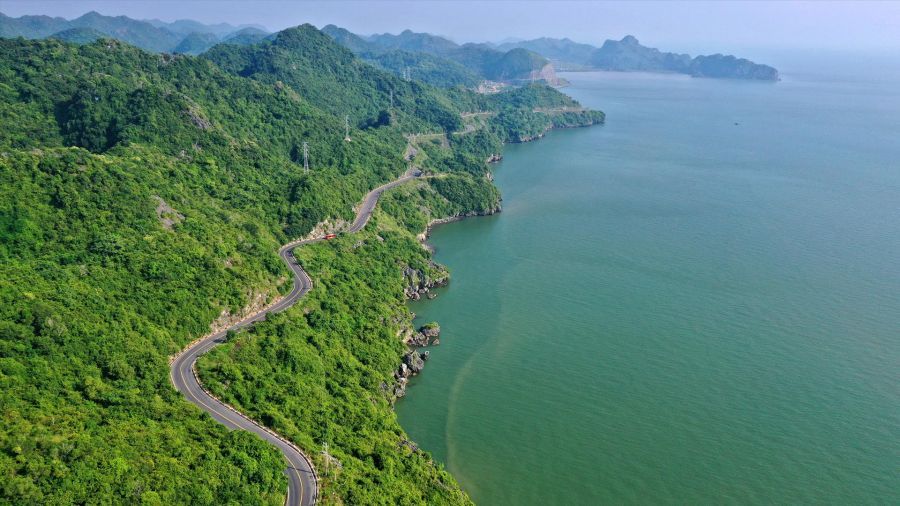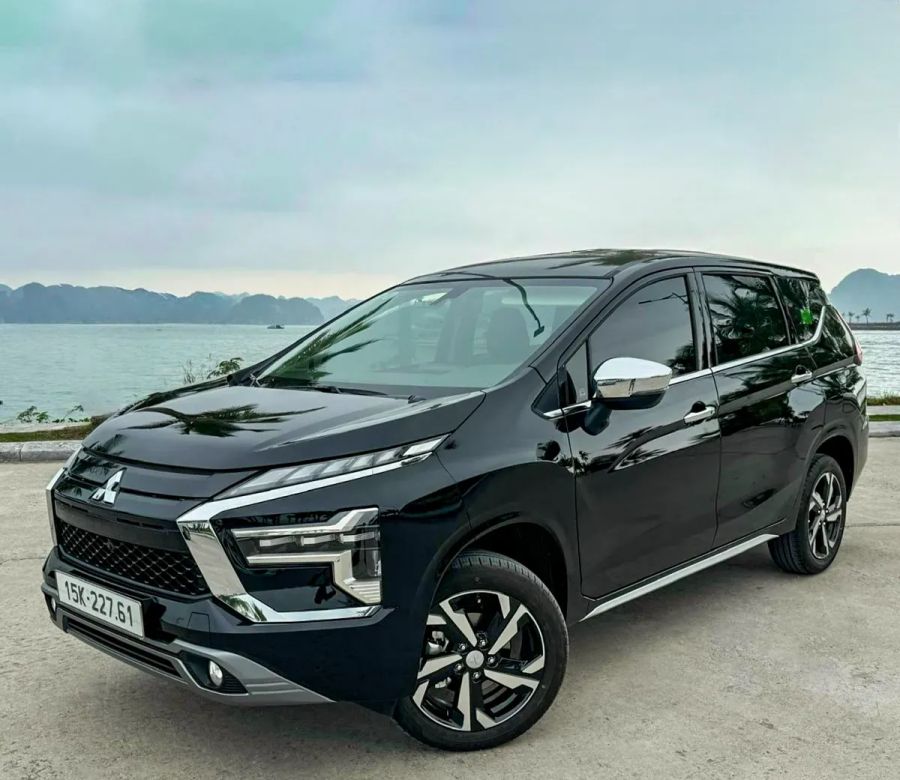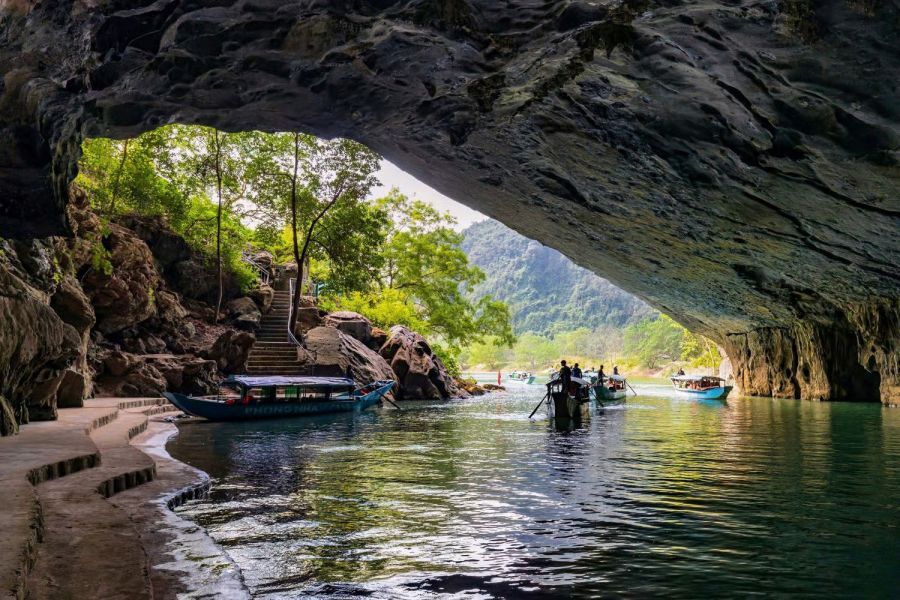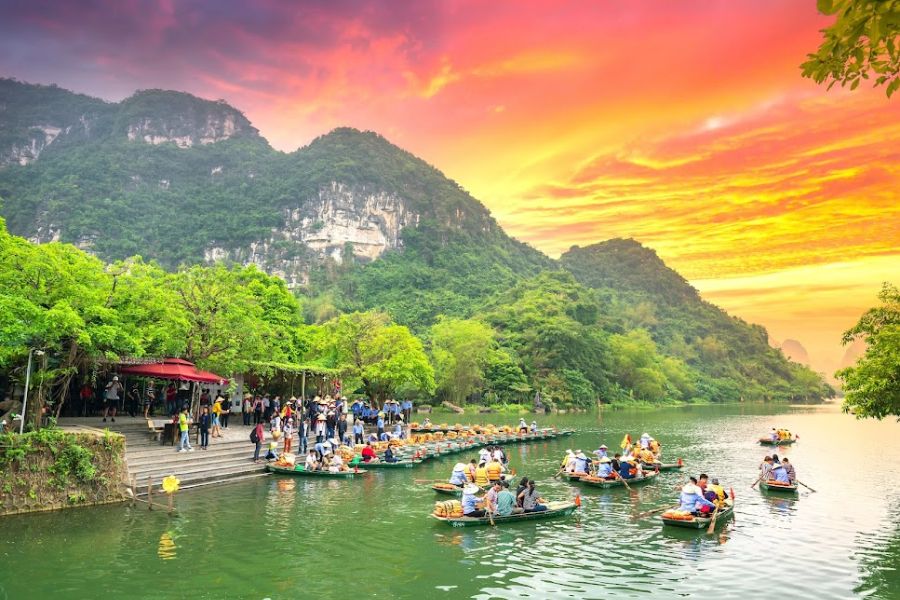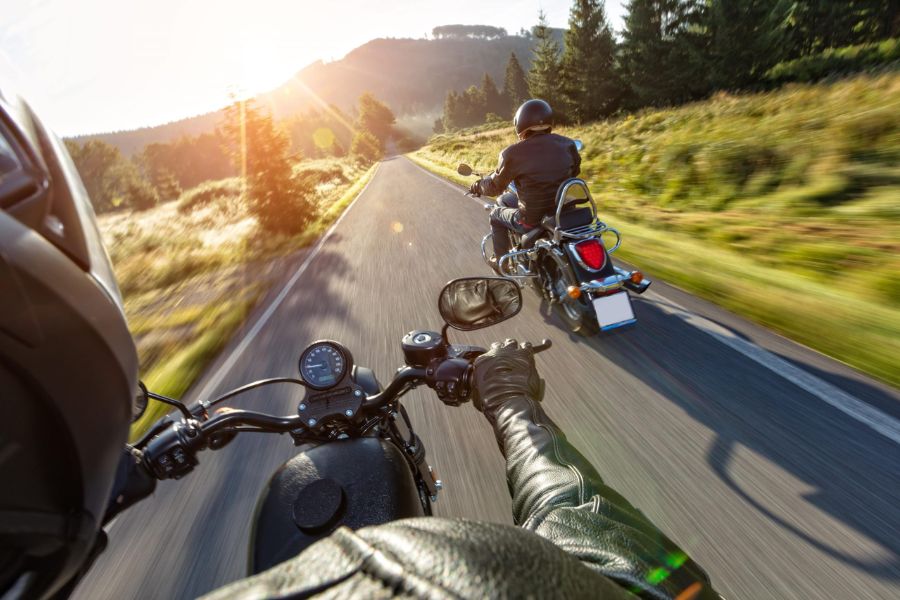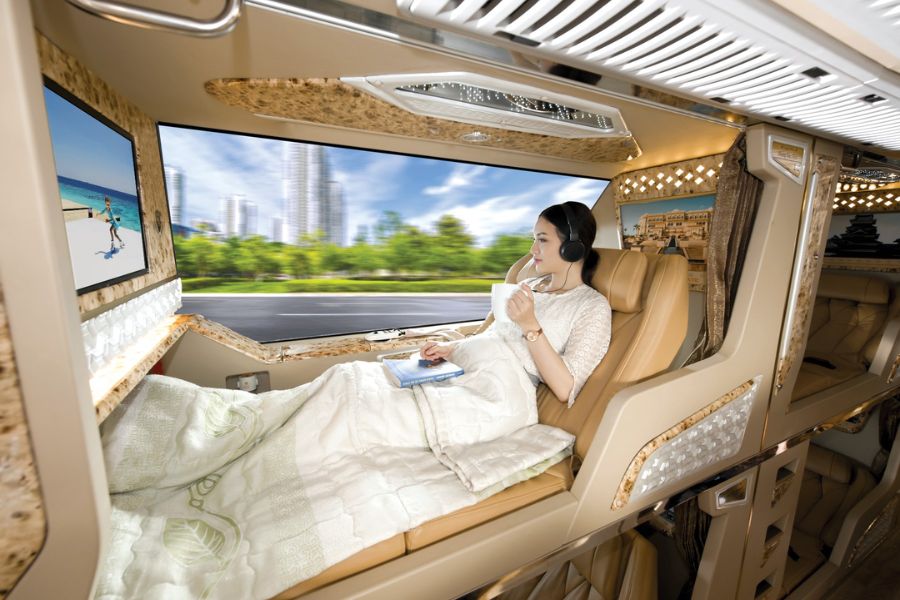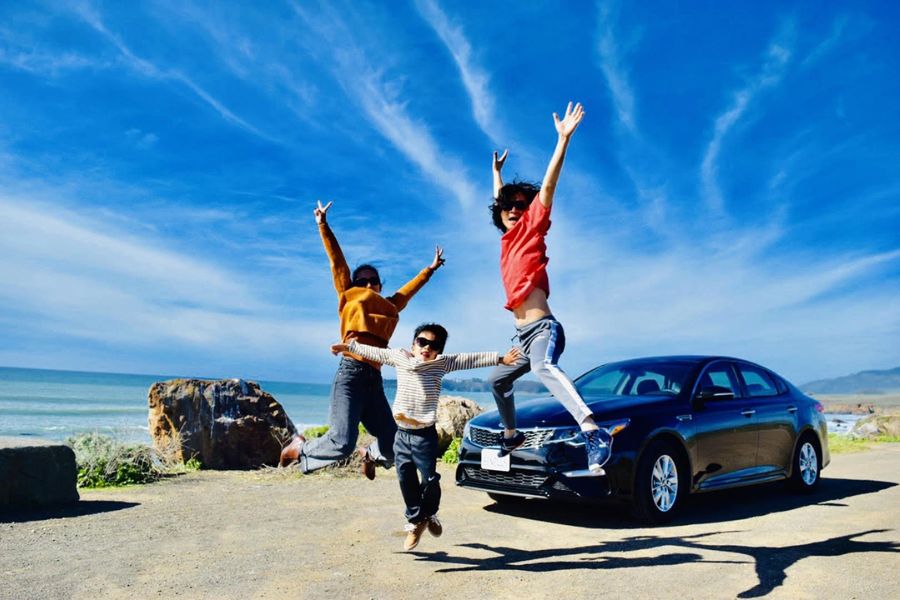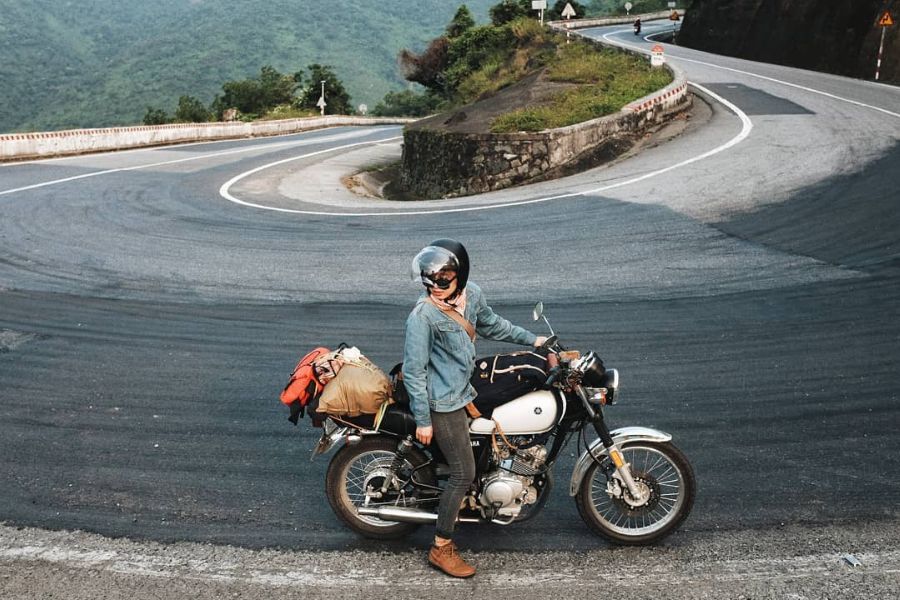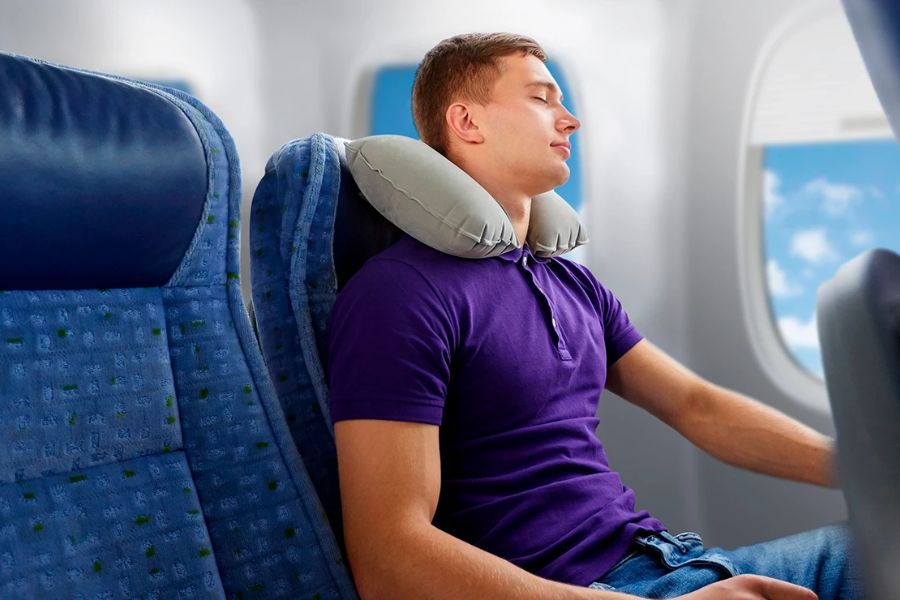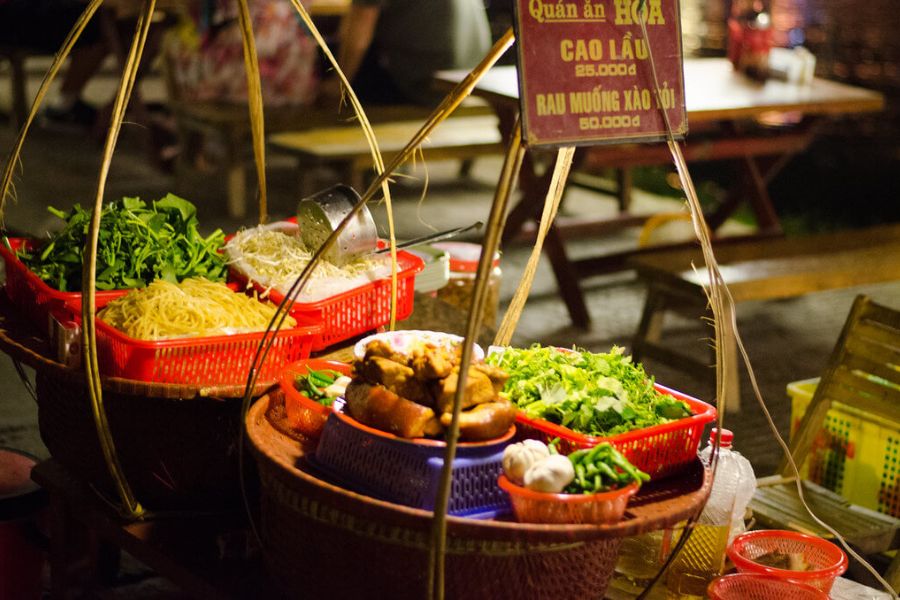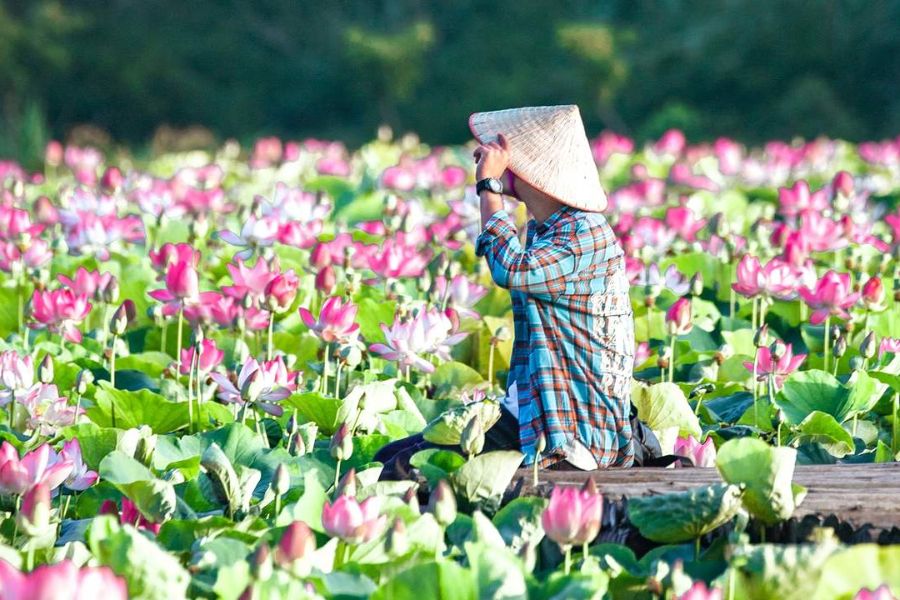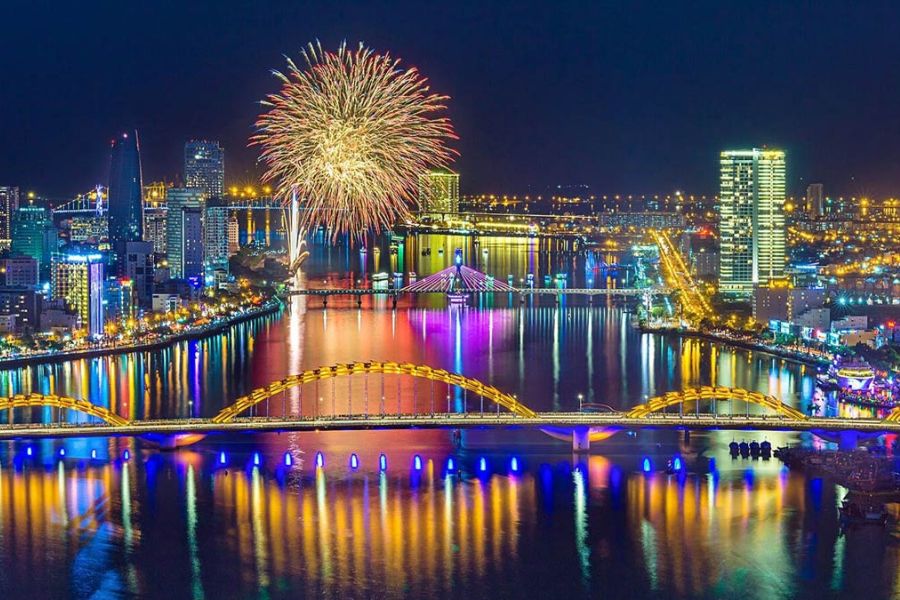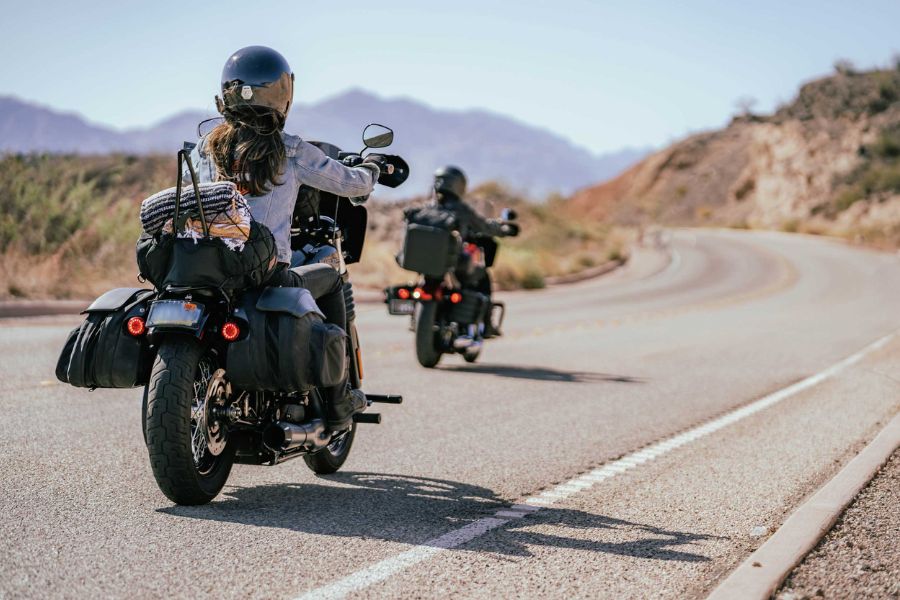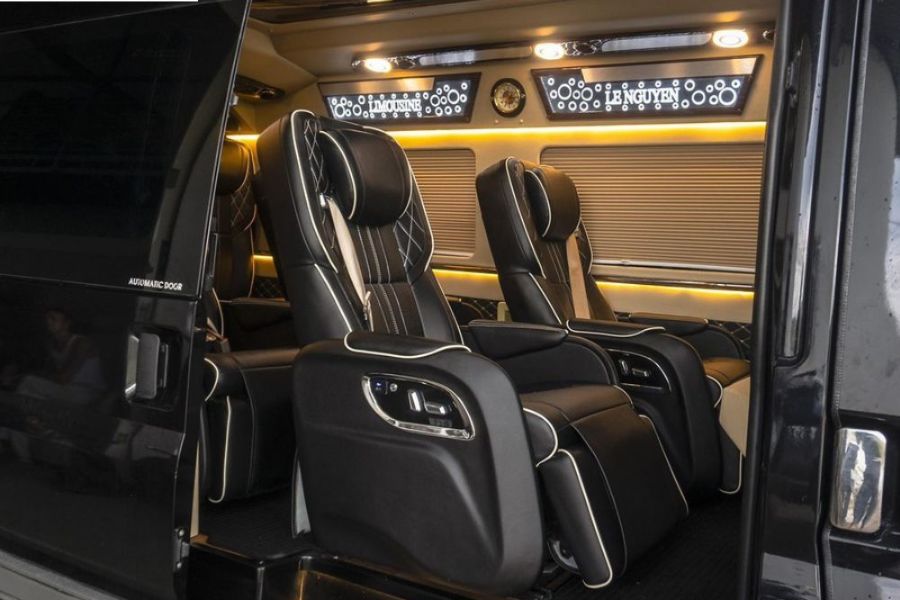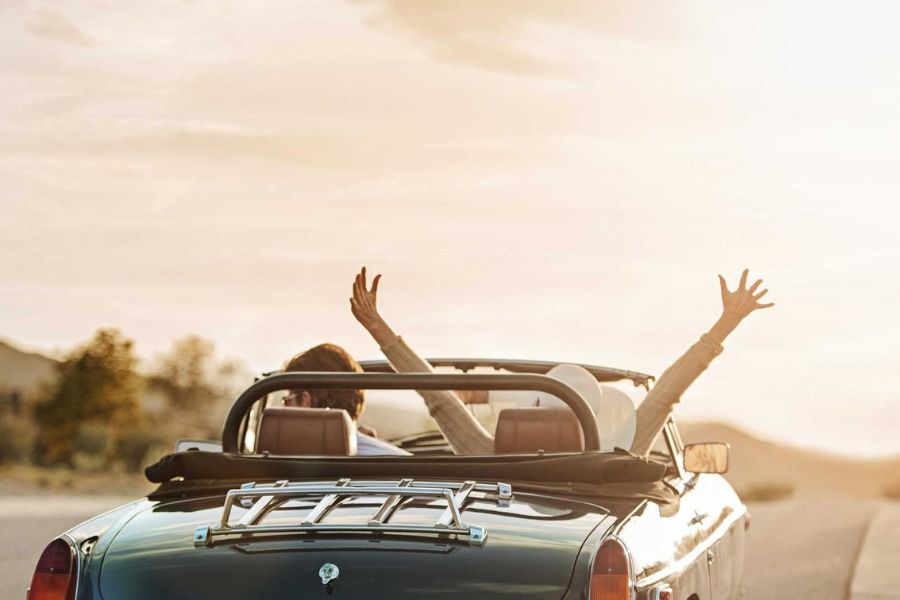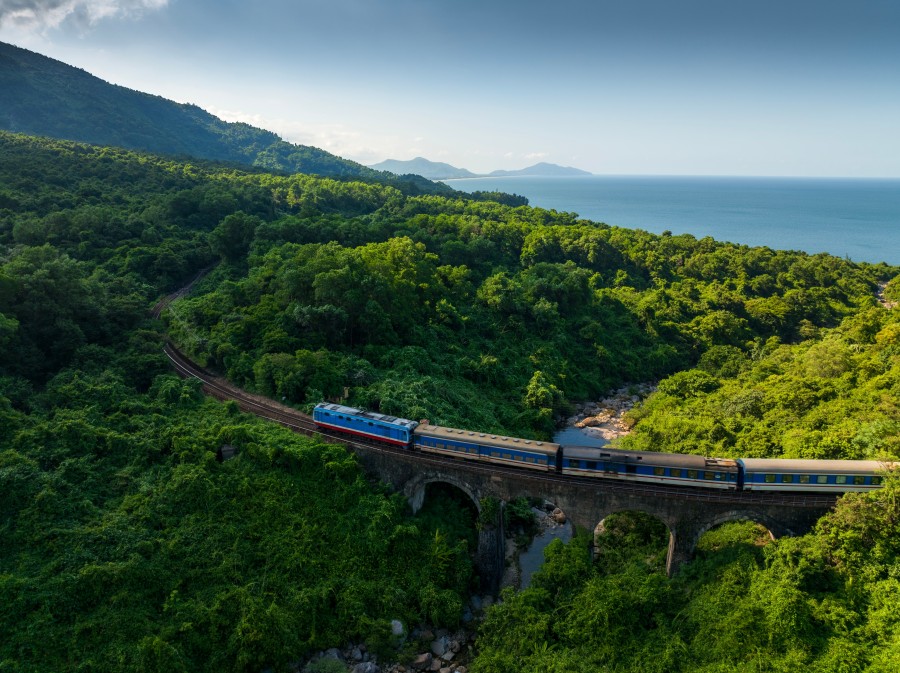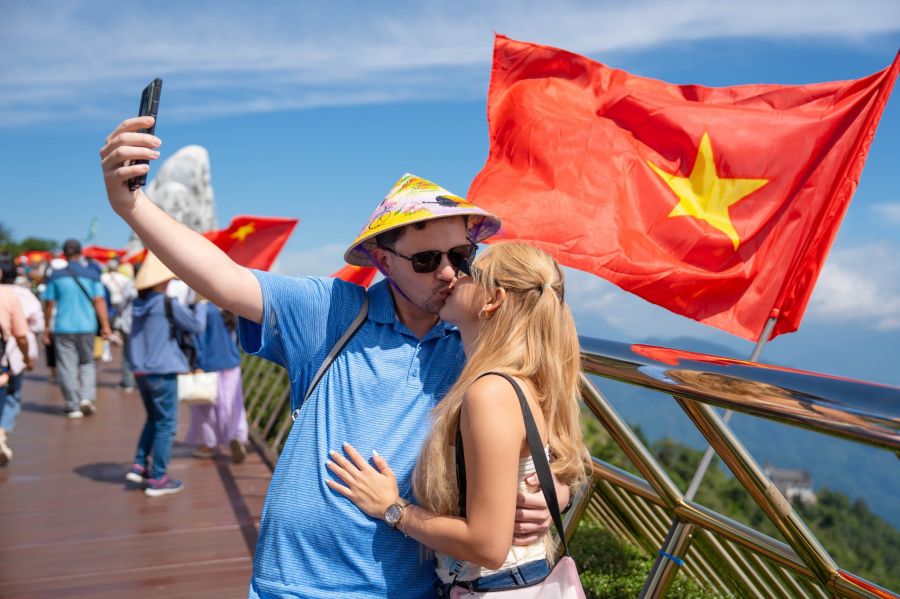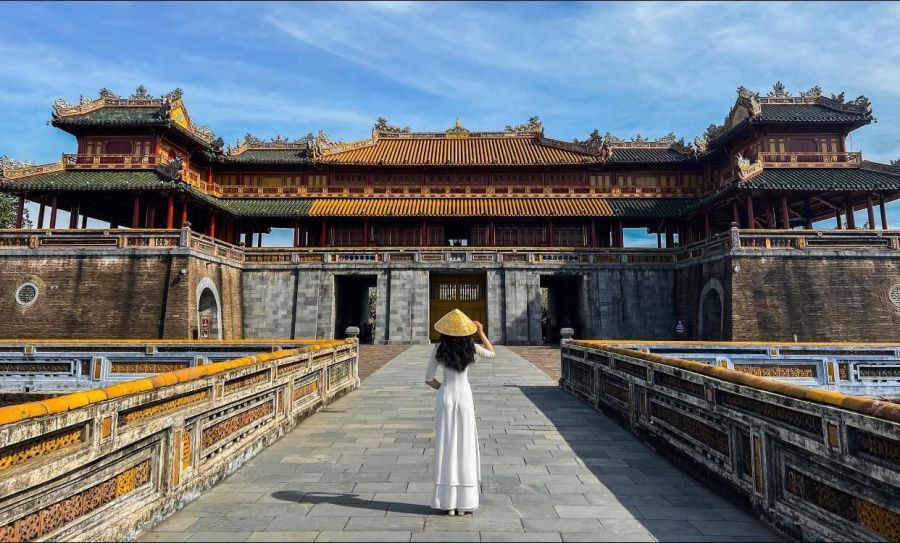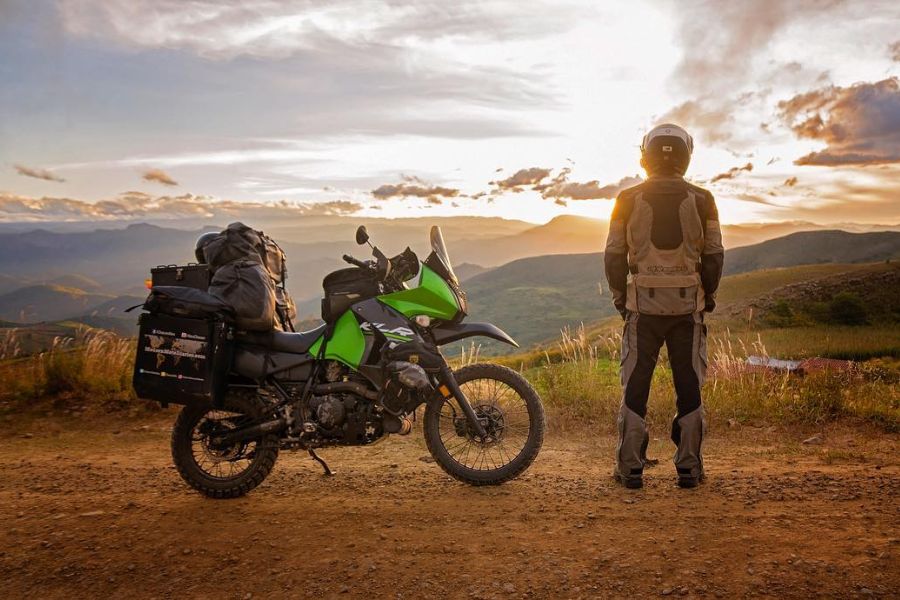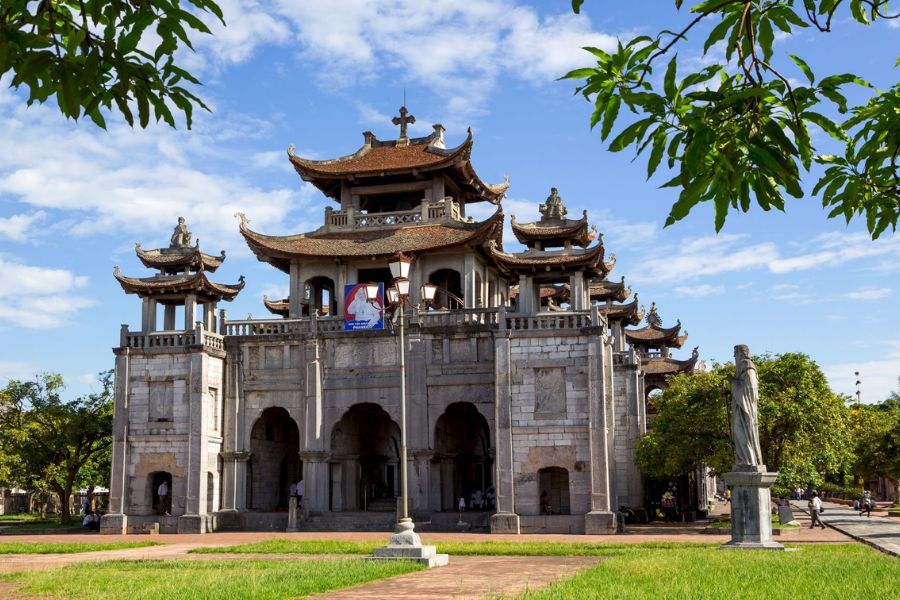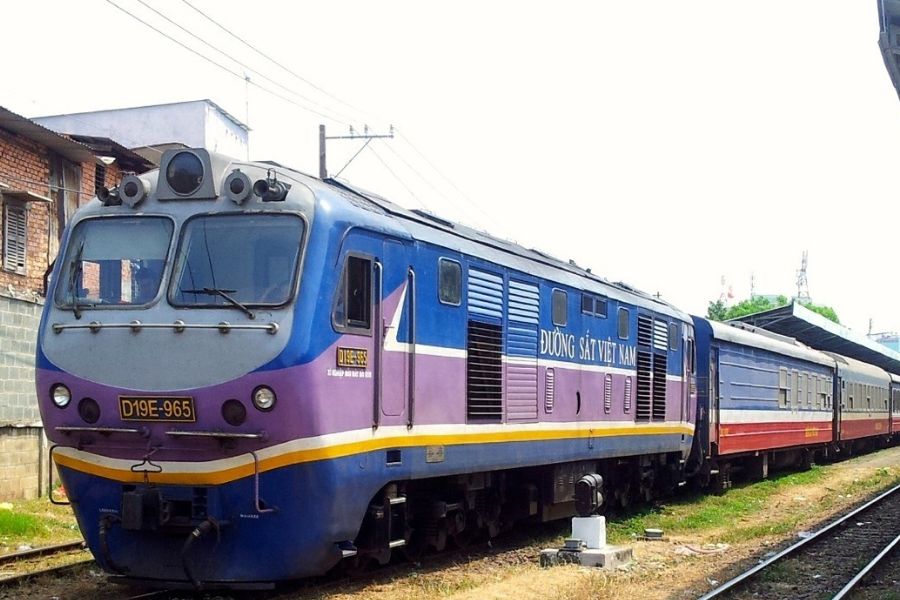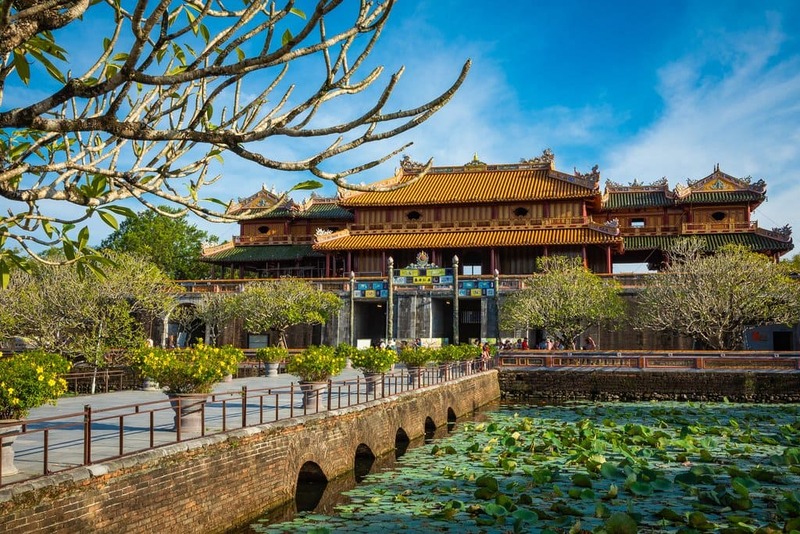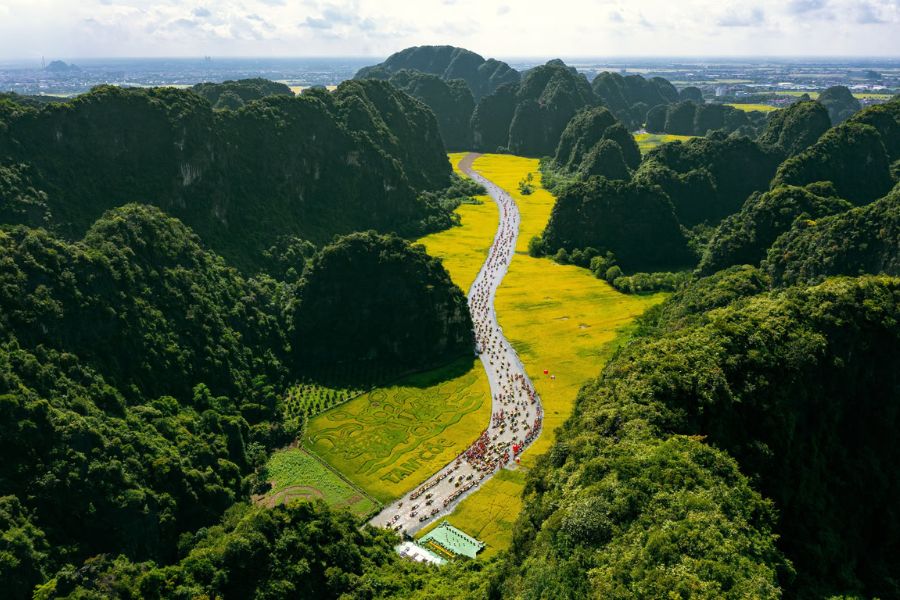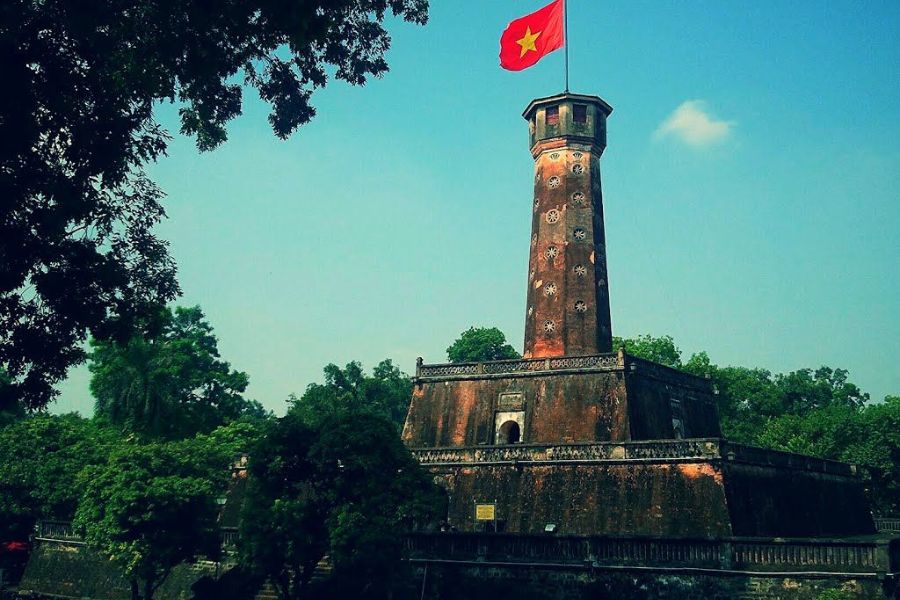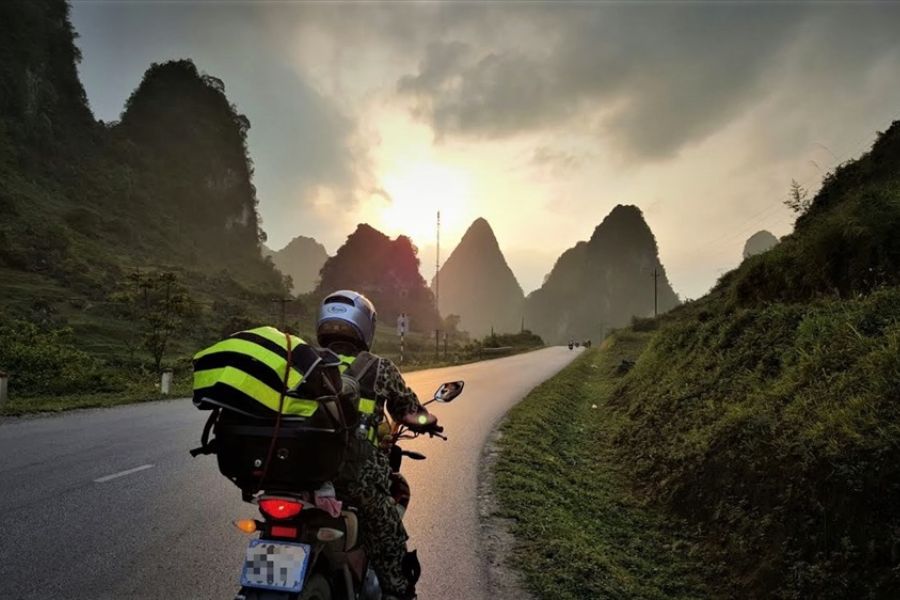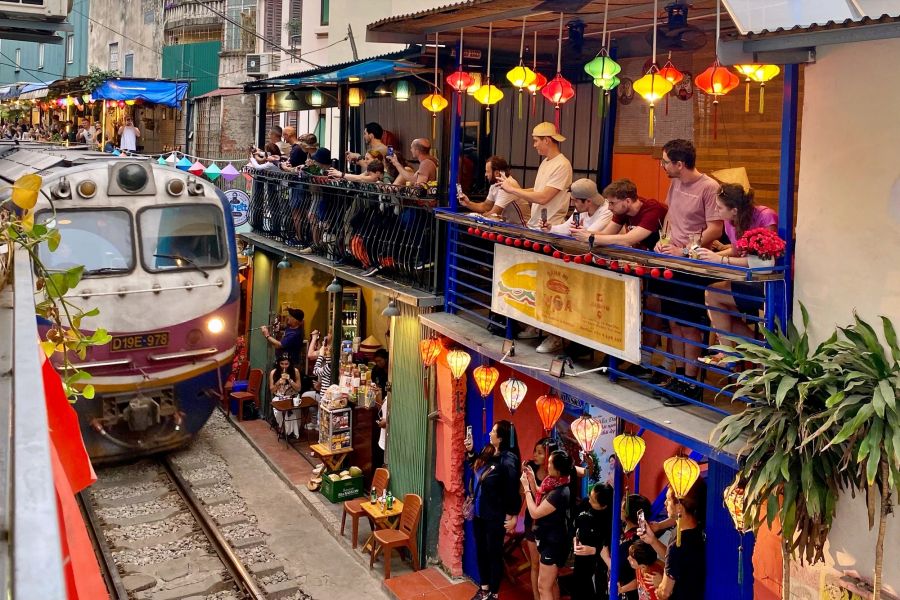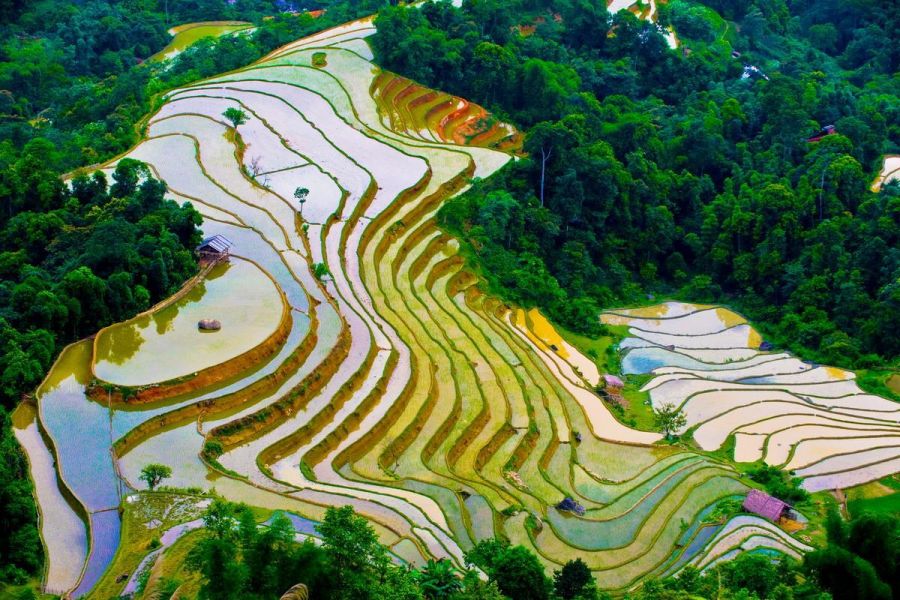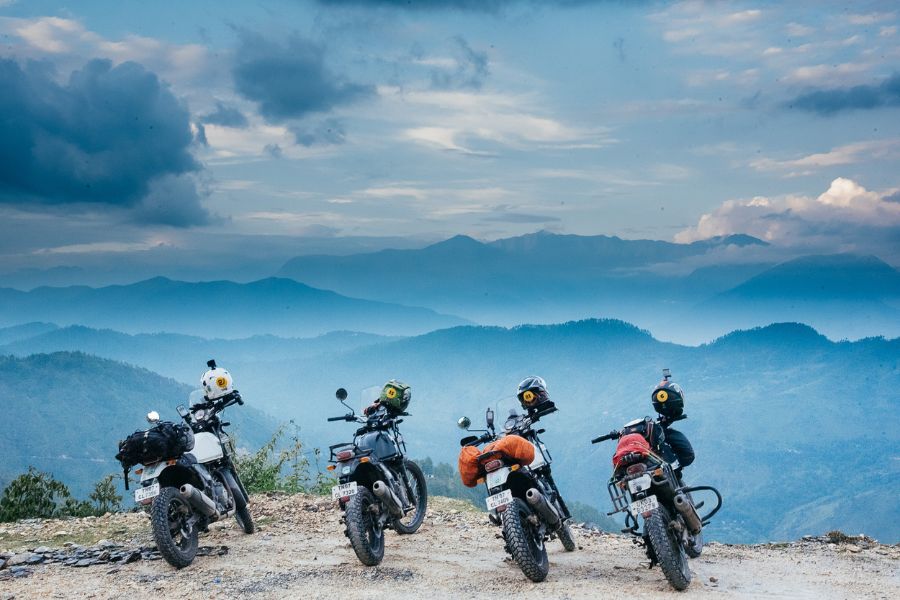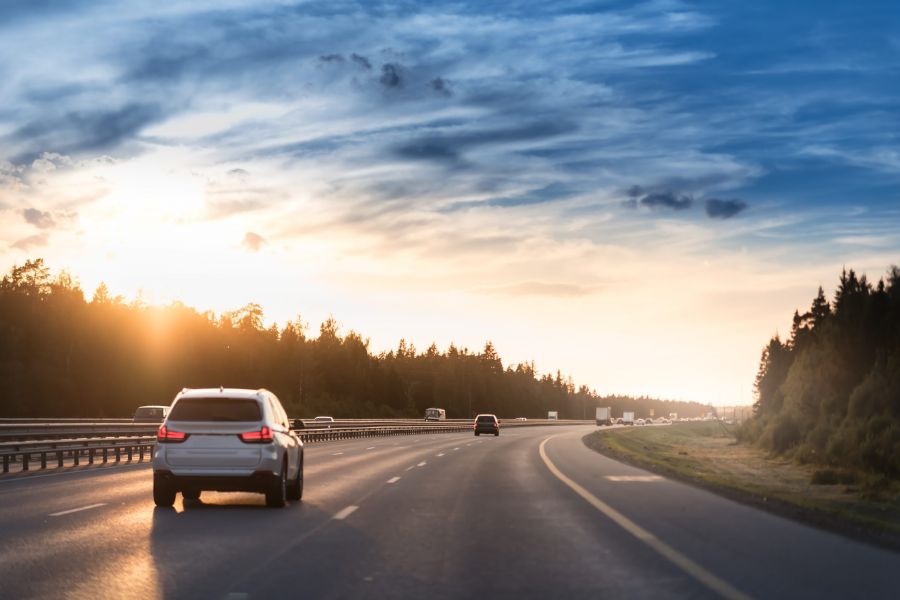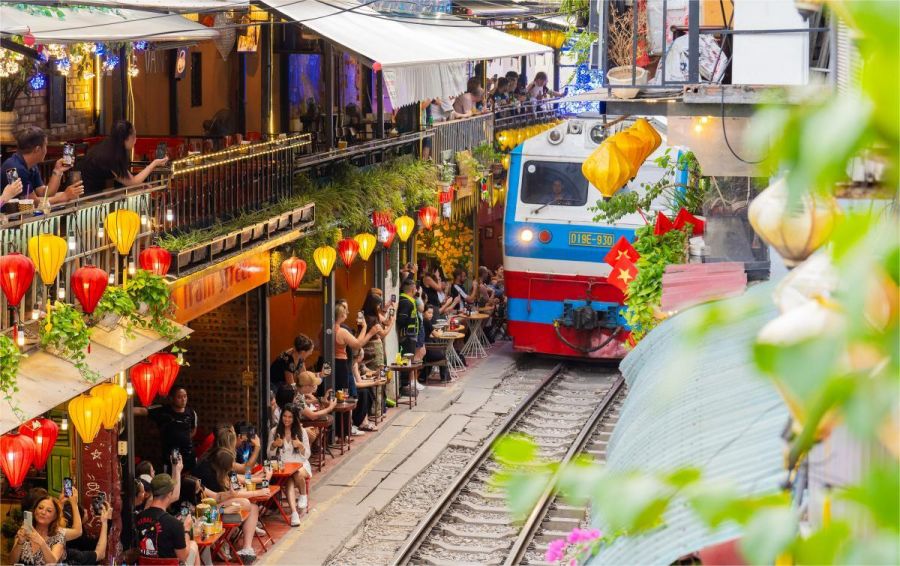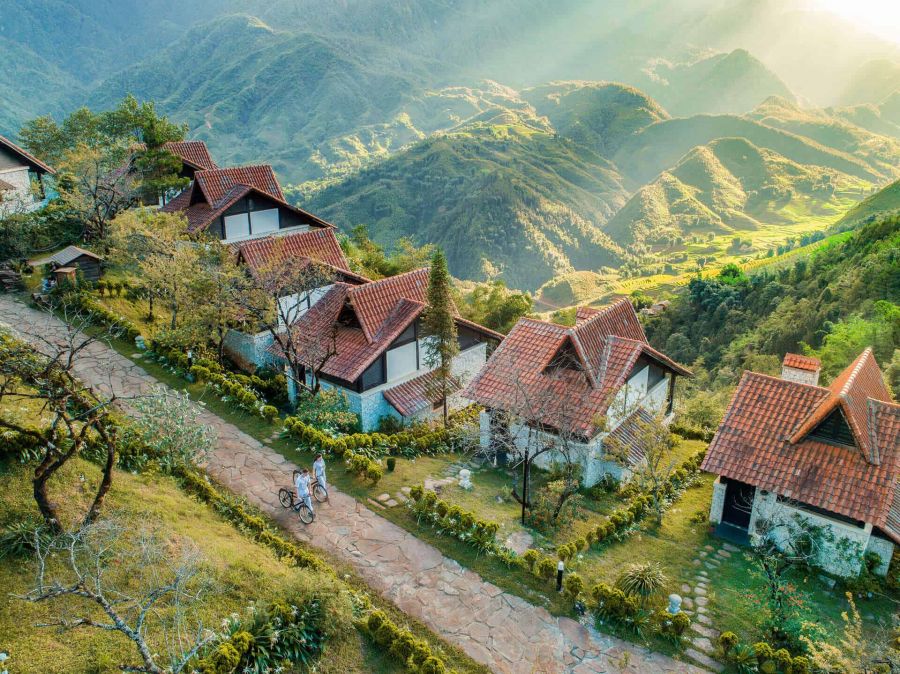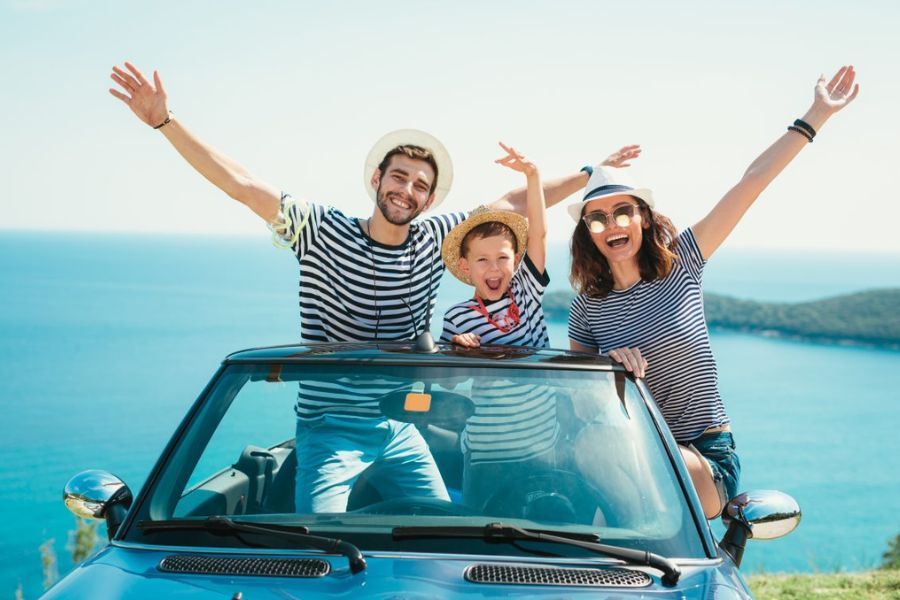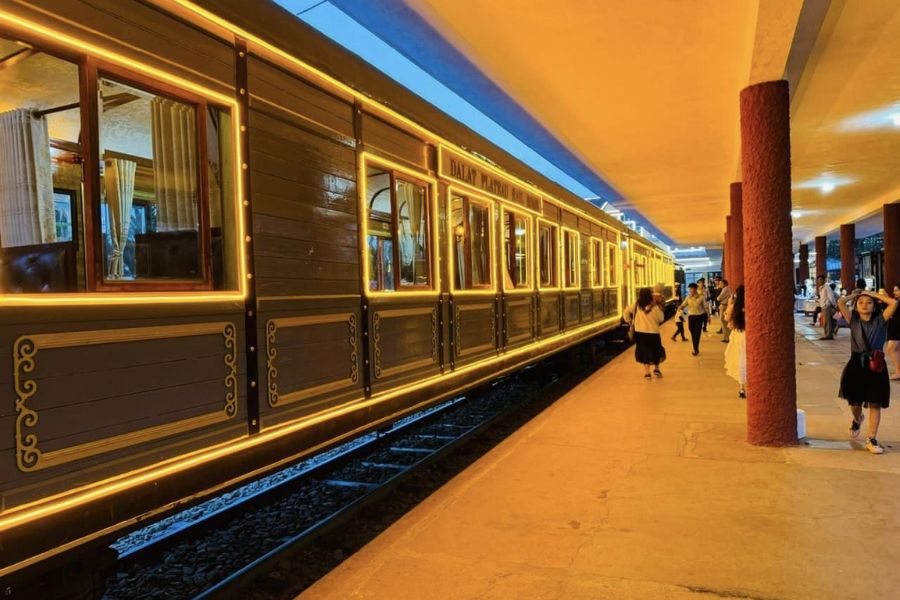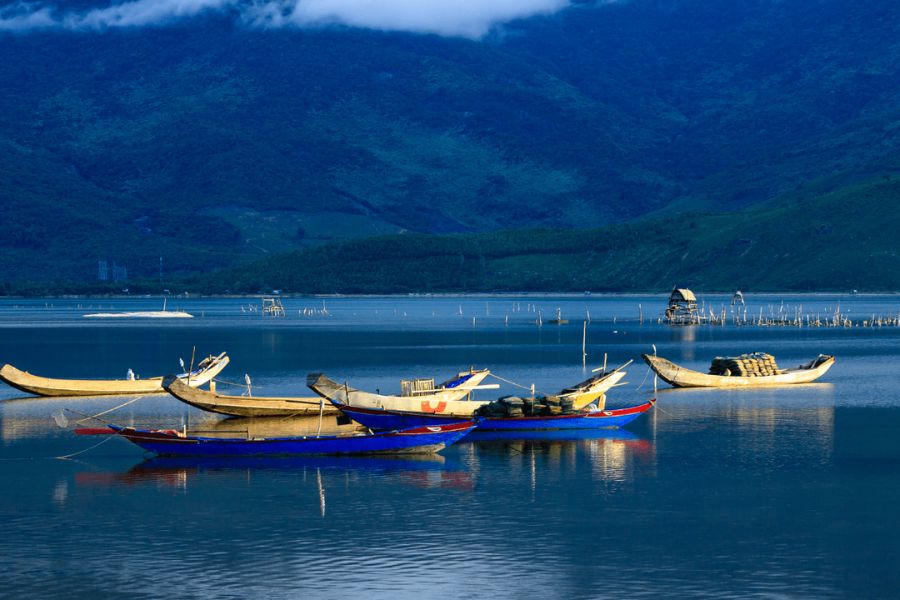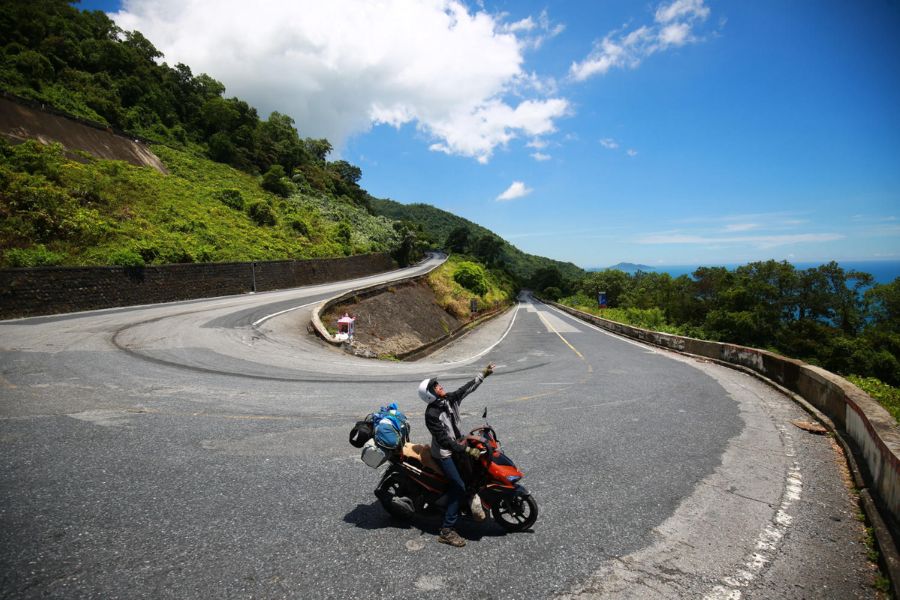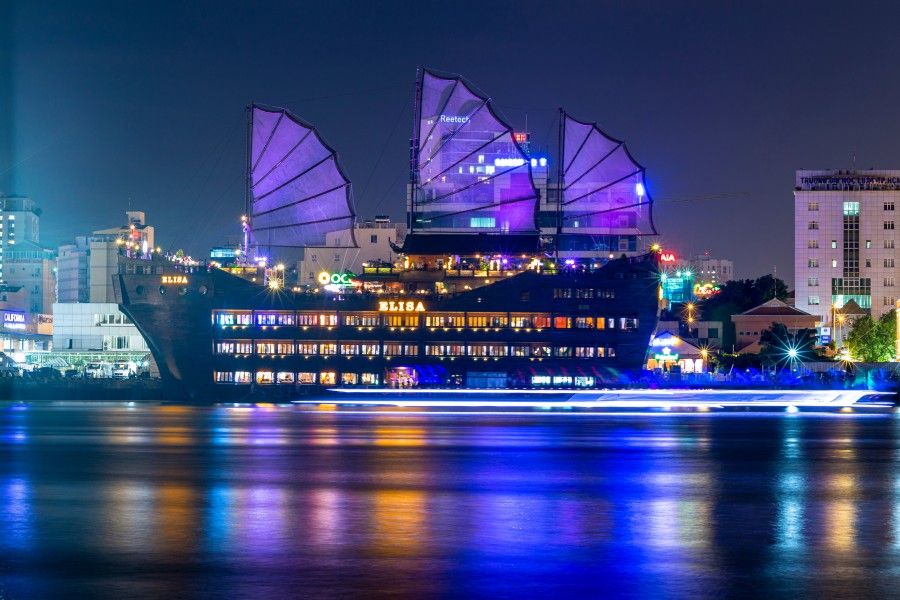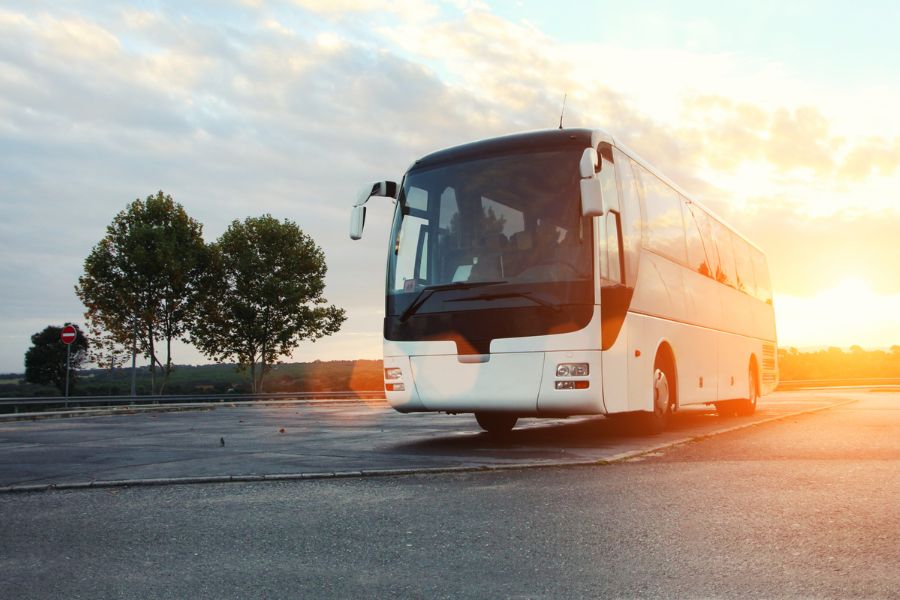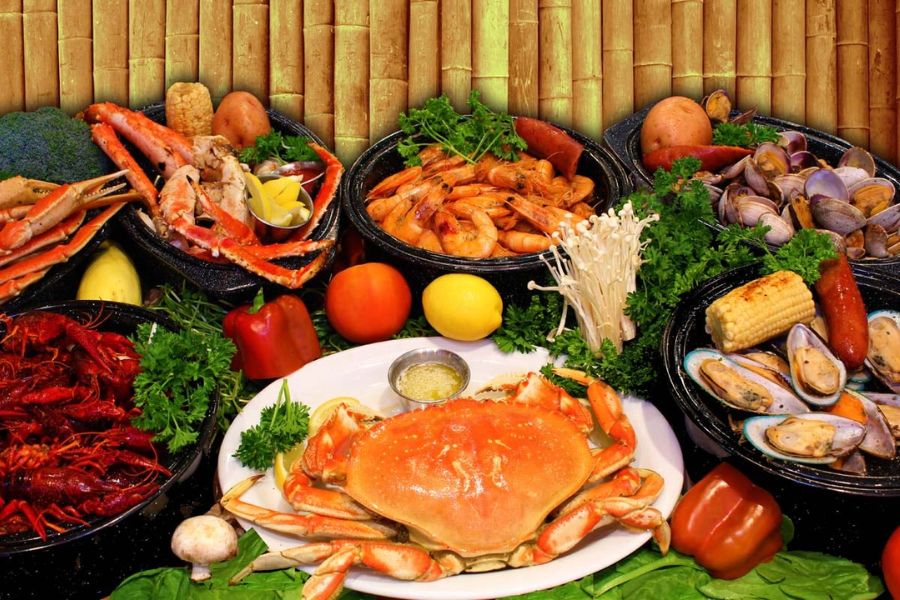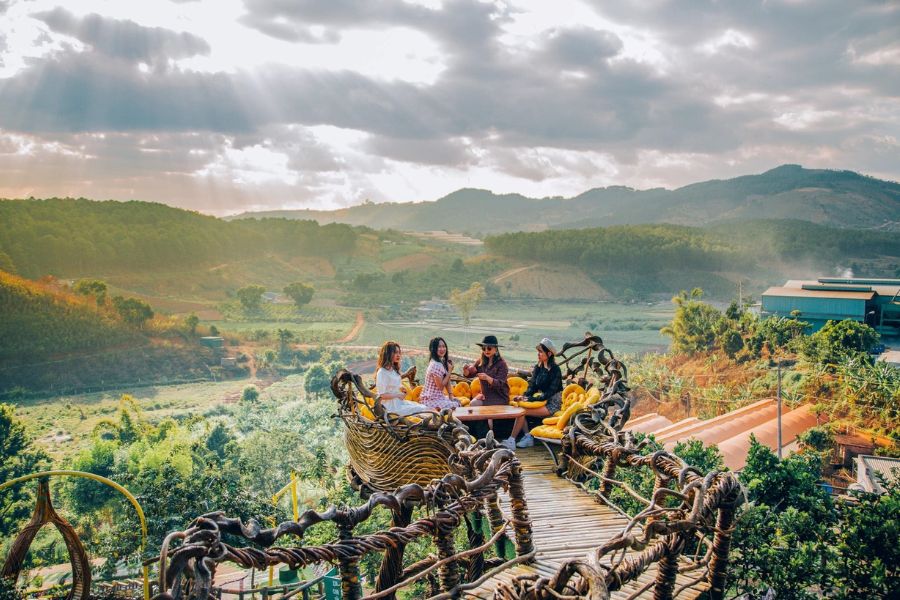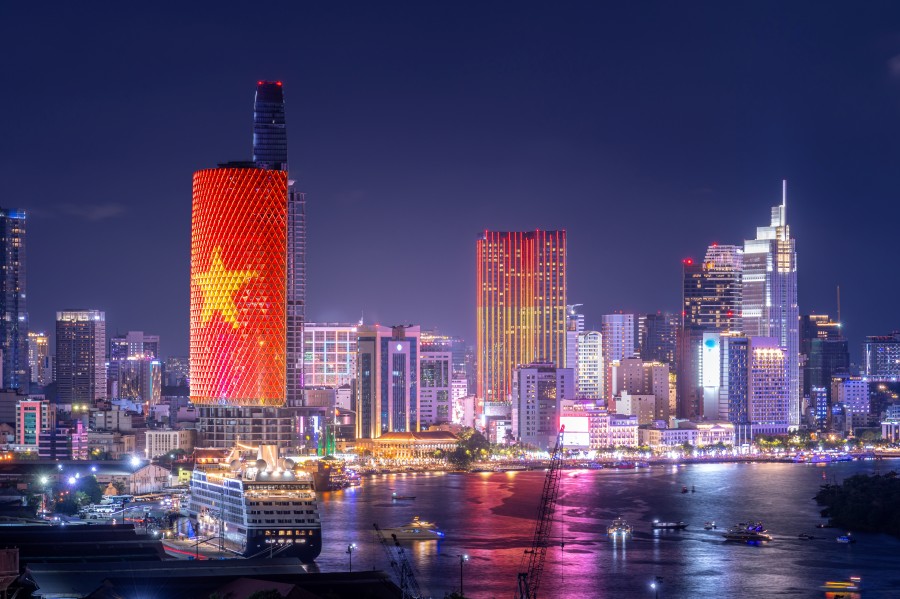Khai Dinh Tomb: The Mixture Of Eastern And Western Styles
The Khai Dinh Tomb is famous for its combination of many architectural points, including Vietnamese, French, Roman, Buddhist, Hindu, and Gothic. The Seni World travel guide will show you its history, cultural experiences, attractions, transportation, and essential travel tips.
Introduction To The Khai Dinh Tomb
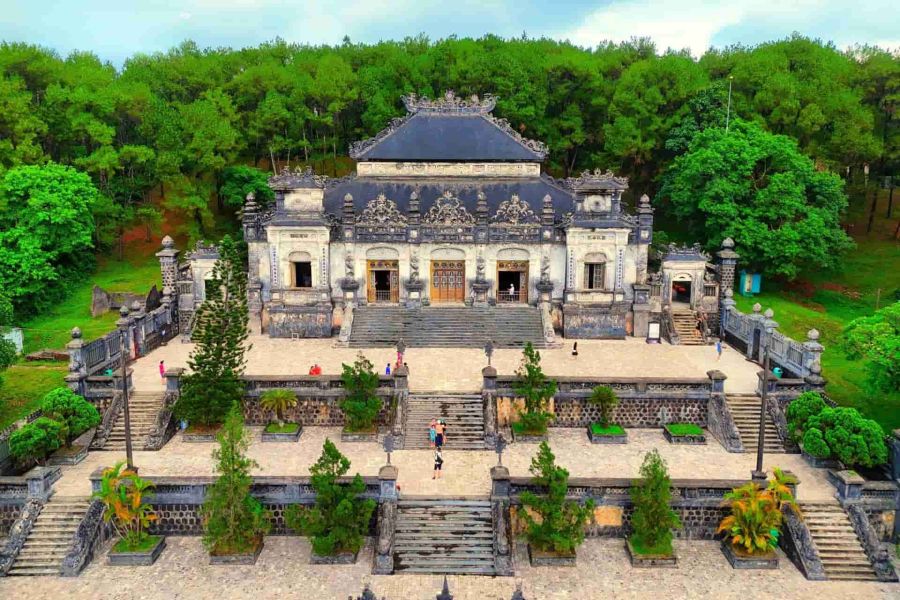
The Khai Dinh Tomb, additionally called Ung Mausoleum (or Ung Lang), is one of the most highlighted imperial tombs of the Nguyen Dynasty, positioned on the slopes of Chau Chu Mountain in Hue. This is also a historical attraction in the Central Vietnam itinerary for travelers, especially global travelers.
In contrast to the traditional Vietnamese architectural style of other royal tombs, the Khai Dinh tomb uniquely blends Vietnamese, French, Roman, Buddhist, Hindu, and Gothic factors alongside conventional Asian motifs. With the intricate design, dark stone facade, as well as intricately adorned interior, this place is a visually charming monument that reflects Emperor Khai Dinh’s extravagant preference and modern outlook.
History Of The Khai Dinh Tomb
Construction of the Khai Dinh Tomb started in 1920, and it took around 11 years to complete, completing in 1931, six years after Emperor Khai Dinh died in 1925. Talk about Khai Dinh, he was the 12th emperor of the Nguyen Dynasty, and he was acknowledged for his admiration of French culture, which closely inspired his tomb’s unique architectural style.
The mausoleum was constructed with imported substances consisting of iron, metal, and concrete. They were uncommon for the time in Vietnam and were largely funded through heavy taxation at the time. Nowadays, the tomb stands as a historical testimony to a distinct transitional period in the Vietnamese monarchy, with the colonial impact on architecture and changing aesthetics.
Unique Architecture Of The Khai Dinh Tomb
The Khai Dinh Tomb is famous for its combination of many architectural points, including Vietnamese, French, Roman, Buddhist, Hindu, and Gothic. Here are 5 unique architectural features of the Khai Dinh Tomb, one of the wonderful attractions in Hue, for you:
Combination Of Eastern And Western Styles
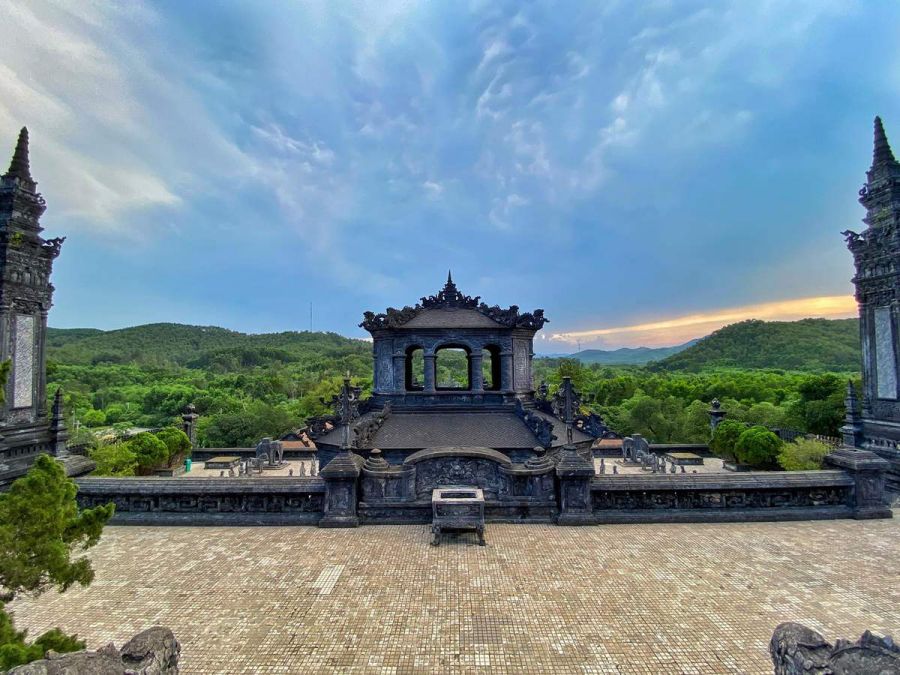
The Khai Dinh Tomb is a mixture of many architectural points. Visiting here, you will see Vietnamese culture, French-style stained glass, Roman arches, Buddhist architecture, Hindu motifs, and Gothic elements. This combination reflects Emperor Khai Dinh’s fascination with Western style and culture. Therefore, his tomb stands out and is unique from all others in Vietnam.
Extensive Use Of Concrete And Modern Materials
The Mausoleum of Emperor Khai Dinh is the only royal tomb in Hue made mainly from reinforced concrete, which was the most modern material at the time. The Khai Dinh’s selection of using cement, iron, as well as slate highlights a strong difference and contrast to the conventional wooden or stone structures of other tombs of the Nguyen Dynasty.
Elaborate Interior With Glass And Porcelain Mosaic

Stepping into the Khai Dinh Tomb’s indoors, particularly Thien Dinh Palace, is exceptionally intricate. Both walls and ceilings are covered in complicated glass and porcelain mosaics, forming imposing dragons and phoenixes, beautiful flowers, and luxurious imperial symbols in brilliant colors. All of them make a surprising and almost surreal visible effect for visitors.
Steep Staircases And Grand Entrance
The Khai Dinh Tomb has steep staircases and a grand front. Arriving here, travelers ought to climb 127 steps to reach the primary structure. These steps give the tomb a towering and special presence on Chau Chu Mountain. The stairways are flanked by beautiful stone dragons and lead to great gates and courtyards, symbolizing the emperor’s power and standing.
Real Looking Statue Of Emperor Khai Dinh

Inside Thien Dinh Palace, you can have an opportunity to see a bronze statue of Emperor Khai Dinh sitting on the top of a marble pedestal and under an elaborately embellished ceiling. This real-looking sculpture, solid in France, is one of the most lifelike imperial images in all Vietnamese tomb structures, not only among the Nguyen Dynasty buildings.
4 Cultural Experiences You Shouldn’t Miss In The Khai Dinh Tomb
Besides uncovering the special architecture of the Khai Dinh Tomb, you can also have cultural experiences around this attraction. Here are 3 cultural experiences you shouldn’t miss when arriving at this emperor’s tomb in the Hue itinerary:
Appreciate The Art Of Mosaic Inlay

The Khai Dinh Tomb displays the Art of Mosaic Inlay (Phap Lam) of Vietnam, which is a traditional approach of glass and ceramic inlay. You can have a chance to see murals where artists broke porcelain into tiny portions and organized them into an art form. There are various meaningful images like dragons, clouds, flora, and imperial symbols on these murals. It is a wonderful cultural craft that few modern artisans nonetheless master.
Witness The Contrast Between Outdoors And Indoors
The outside of the Khai Dinh Tomb is stark, grey, and somber, which makes visitors think it almost looks like a European fortress. However, once you walk into the inner palace, the space has an explosion of vibrant colours, gold leaf things, and unique glittering mosaics. The contrast of the two spaces gives you a deeper cultural insight into the balanced imperial solemnity, with the personal grandeur of the Nguyen Dynasty.
See The Imperial Court Statutes With Colonial Impacts
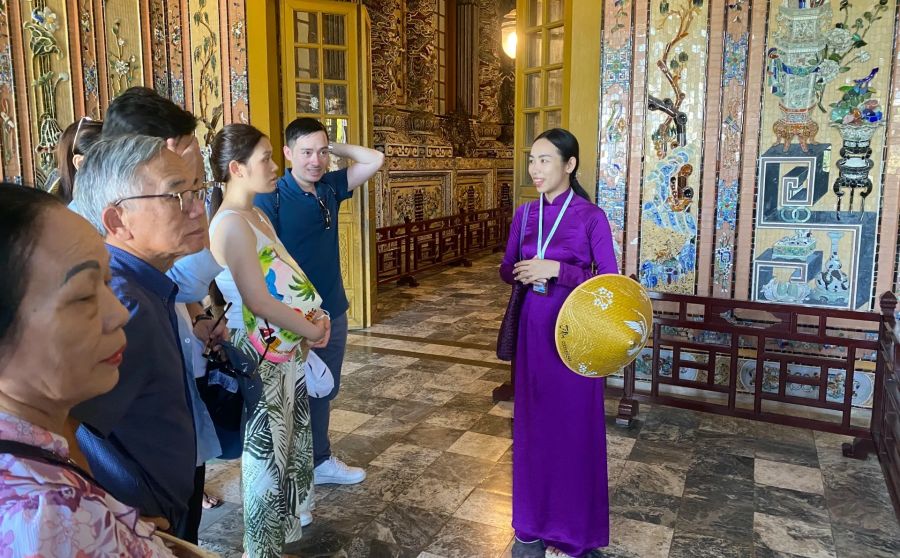
In the courtyard, there are many different rows of stone mandarins, elephants, and horses, which are a traditional feature in Nguyen tombs in general, and in the Khai Dinh Tomb in particular. Particularly, in the Khai Dinh Tomb, their styling and facial capabilities highlight the French realism. This is a fascinating cultural twist on a conventional and conservative ritual display.
Enjoy The Wonderful Hue Royal Court Music
The Hue Royal Court Music, also known as Nha Nhac Cung Dinh Hue, is proudly a UNESCO-recognized intangible heritage. On particular events, ceremonies, and holidays, or throughout historical and cultural excursions, travelers may unwind in these traditional types of performances in Hue. These elegant and ancient songs once entertained emperors and royals, and give travelers, especially global travelers, an immersive vibe in this perfect adventure.
Entrance Fee Of The Khai Dinh Tomb
Here is a table that Seni World has collected the Khai Dinh Tomb entrance fee in Hue. Besides, we have also summarized combo tickets, including the Khai Dinh Tomb, for you to refer to:
| Ticket Type | Adult (from 13 years old) | Child (7 to 12 years old) | Child Under 7 |
| The Khai Dinh Tomb | 150,000 VND | 30,000 VND | Free |
| Imperial City, the Khai Dinh Tomb, and Tu Duc Tomb | 420,000 VND | 80,000 VND | Free |
| Imperial City, the Khai Dinh Tomb, and the Minh Mang Tomb | 420,000 VND | 80,000 VND | Free |
| Imperial City, the Khai Dinh Tomb, the Tu Duc Tomb, and the Minh Mang Tomb | 530,000 VND | 100,000 VND | Free |
Opening Hours Of The Khai Dinh Tomb
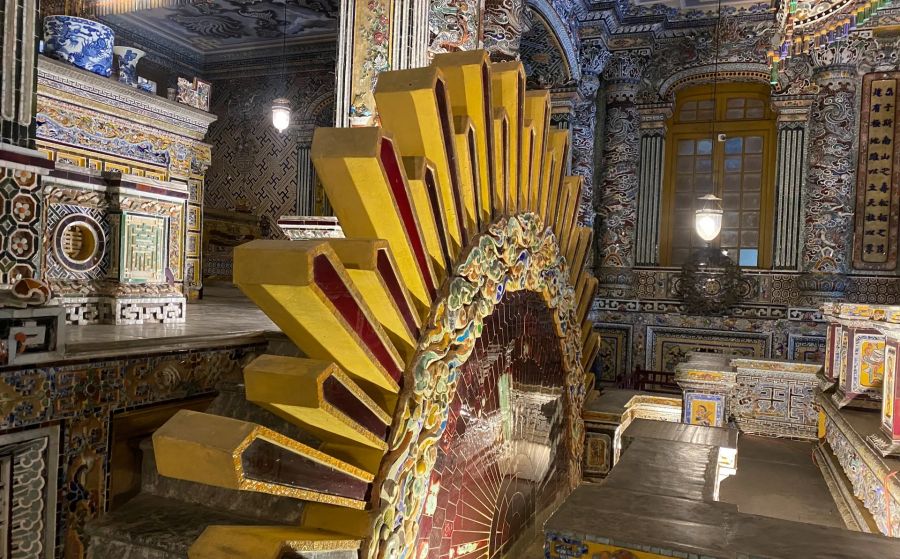
Seni World has also collected all the Khai Dinh Tomb opening hours for travelers. Based on them, you can schedule a pleasant and convenient journey to this iconic place in Hue:
- In the Summer season (from March to October): 07:00 AM to 05:00 PM
- In the Winter season (from November to February): 07:00 AM to 05:00 PM
The opening hours of the ticket booth here are a little different from the entrance hours, including:
- In the Summer season (from March to October): 07:00 AM to 04:30 PM
- In the Winter season (from November to February): 07:00 AM to 04:30 PM
The period from January to April, especially from February to April, is the best time to visit Hue as well as the Khai Dinh Tomb. This is the reason why the open hours of this destination can be different. So you need to carefully ask the manager of this attraction before booking the ticket to visit.
How To Get To The Khai Dinh Tomb
Exploring the Khai Dinh Tomb from the Hue city center, you should select the right way to be convenient and have a low price. Here are hints from Seni World about how to get to the famous Mausoleum of Emperor Khai Dinh in Hue:
| Mode Of Transport | Typical Travel Time (From Hue City Center) | Estimated Cost (VND) | Notes |
| Taxi | From 20 to 25 minutes | About 100,000 to 160,000 VND | This is a comfortable and direct choice and ideal for groups or travelers seeking comfort. |
| Private Car | From 20 to 25 minutes | About 400,000 to 600,000 VND (the round trip) | This is the best choice for comfort, communities, and families. You can share the cost and feel relaxed. |
| Motorbike | From 20 to 25 minutes | About 100,000 to 150,000 VND per day (rental) | Motorbikes are flexible, free, and adventurous, and you can easily rent one at accommodations or local rental shops. |
| Bike | From 40 to 60 minutes | About 50,000 VND per day (rental) | Biking is an eco-friendly option of transportation, a scenic ride along tranquil roads. It is great if the weather is pleasant. |
| Tour Service | Half-day or full-day | About 300,000 to 800,000+ VND | The tour service consists of a local guide and typically features multiple attractions, such as the mixture of the Tu Duc Tomb, the Khai Dinh Tomb, and the Minh Mang Tomb. |
Things To Know Before Traveling To The Khai Dinh Tomb

To have an interesting, safe, and memorable journey in the Khai Dinh Tomb in Hue, please remember the following important travel tips. These tips will help you discover this attraction conveniently, but still respect the spirituality, culture, and protect yourself best:
- Check the weather forecast: The weather in Hue may be hot and humid or rainy, depending on the travel season, which you choose to arrive here. Therefore, don’t forget to take a look and carefully check beforehand, and plan accordingly.
- Visit early or late in the day: You should go to this tomb in the early morning or late afternoon to avoid both heat and crowds, particularly throughout the peak travel months, like from January to April, especially from February to April.
- Wear secure walking shoes: Exploring the Khai Dinh Tomb, there are steep stairs and uneven stone paths, so preparing suitable shoes is essential for you.
- Protect your skin: Especially in the Summer season, you should remember to prepare sunscreen with high SPF and a hat to protect your skin.
- Carry water and stay hydrated: There are limited vendors around the mausoleum who sell bottles of water, so you need to bring one to make sure that your body has enough water.
- Select polite and simple clothing: Your apparel needs to cover your shoulders and knees. Although it is not strictly enforced, respectful attire is usually recommended at historical attractions.
- Cash is king: You need to bring cash (VND or Vietnam Dong) to buy tickets and small purchases because ATMs are not common at this destination.
- Schedule a combo of visiting: Because of the relation and the nearby areas, you can integrate the exploration of the Khai Dinh Tomb with nearby tombs like the Minh Mang Tomb and the Tu Duc Tomb for a full day of history, culture, and memories of the past.
- Don’t be noisy: You need to avoid loud behavior because this is a historic and spiritual destination. Remember to have respectful behavior and voice.
Final Thoughts: Is The Khai Dinh Tomb Worth Visiting?
The Khai Dinh Tomb is a symbolic attraction in Hue, which has a combination of many architectural points, including Vietnamese, French, Roman, Buddhist, Hindu, and Gothic. If you want to take a Khai Dinh Tomb adventure, as well as consult about interesting things to do in Hue, and receive support for the visa process, let’s contact Seni World, a reputable tour operator from Vietnam. We are here to help you from A to Z on your Khai Dinh Tomb discovery journey.

